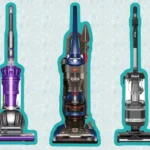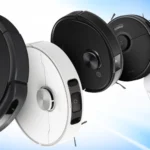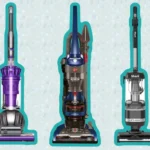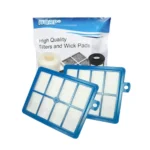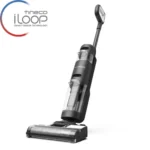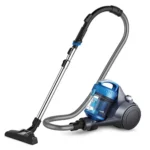Are you one of the millions of people who suffer from allergies and asthma? Are you looking for an effective way to alleviate your symptoms at home? Look no further than UV-C lights and HEPA filters. These two technologies are becoming increasingly popular for their ability to purify the air in your home, but which one is better for allergies and asthma? In this article, we’ll be diving deep into the pros and cons of UV-C lights and HEPA filters, as well as other factors to consider when making your decision. Strap in as we explore the world of air purification and find the best solution for your respiratory health.
What are allergies and asthma?
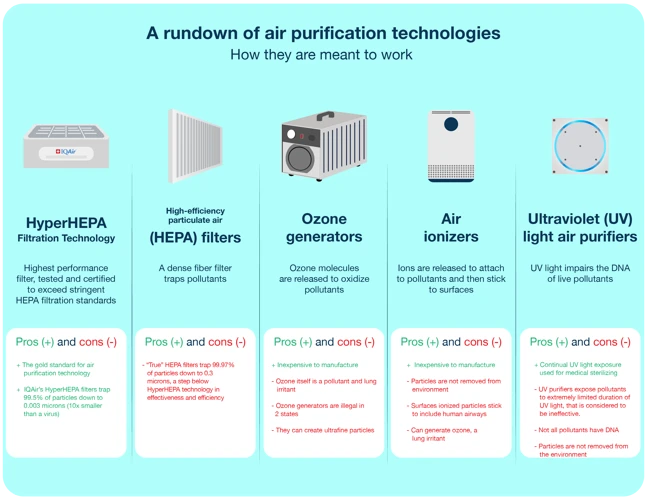
Allergies and asthma are two common respiratory conditions that can significantly affect one’s quality of life. Allergies are caused by the immune system’s reaction to certain substances, known as allergens, that the body considers harmful. The most common allergens include pollen, dust mites, mold spores, pet hair or dander, and certain foods. Allergic reactions can manifest as sneezing, runny or stuffy nose, watery eyes, itching, rashes, or hives.
On the other hand, asthma is a chronic lung disease that causes inflammation and narrowing of the airways, leading to difficulty breathing. Asthma symptoms may include wheezing, coughing, chest tightness, and shortness of breath. Like allergies, asthma triggers may vary from person to person and can be triggered by certain allergens, such as pollen or dust, but also by air pollution, exercise, stress, or cold air.
The prevalence of allergies and asthma has increased in recent years, affecting millions of people worldwide. Both conditions can be managed with proper medical treatment, including medication and lifestyle changes. However, using air purifiers with advanced technologies, such as UV-C lights or HEPA filters, can also help to reduce the amount of allergens and pollutants in the air, thus easing allergy and asthma symptoms.
If you want to learn more about the benefits of UV-C light or HEPA filters for allergies and asthma, be sure to check out our related articles: “How Science Proves that UV-C Fights Allergies and Asthma” and “5 Benefits of Using a Smart Vacuum with UV-C Technology”. We also give some tips on maximizing the effectiveness of UV-C light in your home in our article “Maximizing UV-C Effects: Tips and Tricks” and explain how UV-C light can kill germs and bacteria in your home in our article “How UV-C Light Kills Germs and Bacteria in Your Home”.
What is a UV-C light?
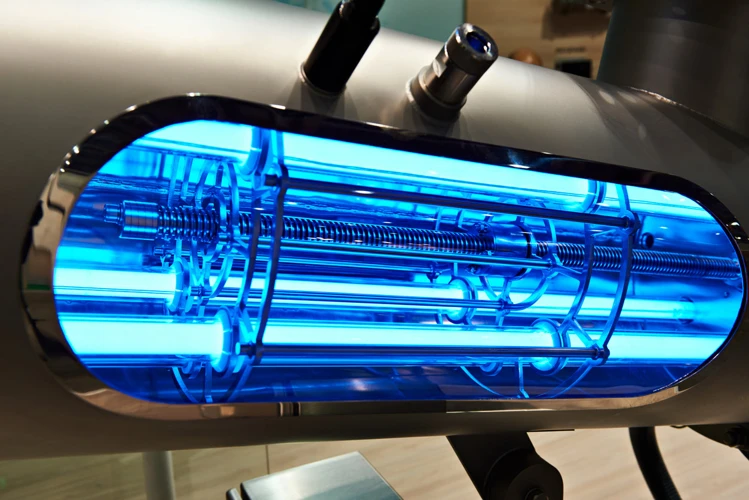
UV-C light is a type of ultraviolet light that has a wavelength range between 200 to 280 nanometers. This wavelength range is considered germicidal as it can kill up to 99.9% of bacteria and viruses. UV-C light is often used in air purifiers, HVAC systems, and other sanitation devices to kill airborne bacteria and viruses.
How does UV-C light work?
UV-C light works by breaking apart the DNA and RNA of bacteria and viruses. When exposed to UV-C light, the nucleic acids of these microorganisms become damaged and can no longer replicate or cause an infection. This deactivation process is referred to as “germicidal irradiation.”
UV-C light and Allergies/Asthma
UV-C light is not specifically designed to target allergens or asthma triggers. However, it can help to reduce the number of airborne pathogens in the environment, which can help to alleviate allergy and asthma symptoms. Mold and bacteria are common triggers for these respiratory conditions, and UV-C light can effectively kill these microorganisms.
Types of UV-C light devices
There are two main types of UV-C light devices: portable and in-duct. Portable UV-C air purifiers are designed to be moved from room to room and usually have a limited coverage area. In-duct UV-C lights, on the other hand, are installed in the HVAC system and can cover the entire home. These devices require professional installation and maintenance.
UV-C light safety precautions
UV-C light can be harmful to human exposure. It is essential to take the necessary safety precautions when using UV-C light devices. It is recommended to always wear protective clothing and eyewear when using UV-C lights. UV-C lights should be shielded to prevent direct exposure to the skin and eyes.
Summary
UV-C light is a type of ultraviolet light that can effectively kill bacteria and viruses. It is often used in air purifiers, HVAC systems, and other sanitation devices. While it is not specifically designed for allergies or asthma, it can help to reduce the number of airborne pathogens in the environment, which can alleviate symptoms. UV-C light comes in two main types: portable and in-duct. However, it is essential to take the necessary safety precautions to avoid direct exposure to the skin and eyes.
What is a HEPA filter?
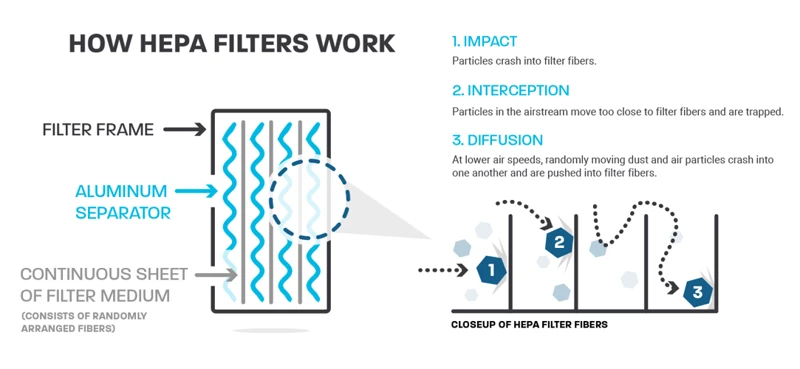
A HEPA filter refers to a high-efficiency particulate air filter, which is designed to trap tiny airborne particles as small as 0.3 microns. These types of filters are often made of fine, tightly woven fibers and can capture up to 99.97% of particles that pass through them.
HEPA filters are commonly used in air purifiers and HVAC systems to help remove allergens such as pollen, dust mites, and pet dander, as well as pollutants such as smoke and smog.
One of the biggest benefits of HEPA filters is their ability to trap very small particles, which can be especially beneficial for individuals with allergies or asthma. Unlike other types of filters that simply capture large particles and allow small ones to pass through, HEPA filters are able to capture even the tiniest of particles, reducing indoor air pollution and improving air quality.
However, there are some drawbacks to HEPA filters as well. They can be expensive, and may not be practical for all environments. Additionally, they can require frequent replacement or cleaning to maintain their effectiveness.
HEPA filters are a highly effective tool for reducing indoor air pollution and improving indoor air quality. When used in combination with other strategies for managing allergies and asthma, such as minimizing exposure to allergens and pollutants, they can be an important part of an overall treatment plan.
UV-C Light vs. HEPA Filters: Which is Better for Allergies and Asthma?
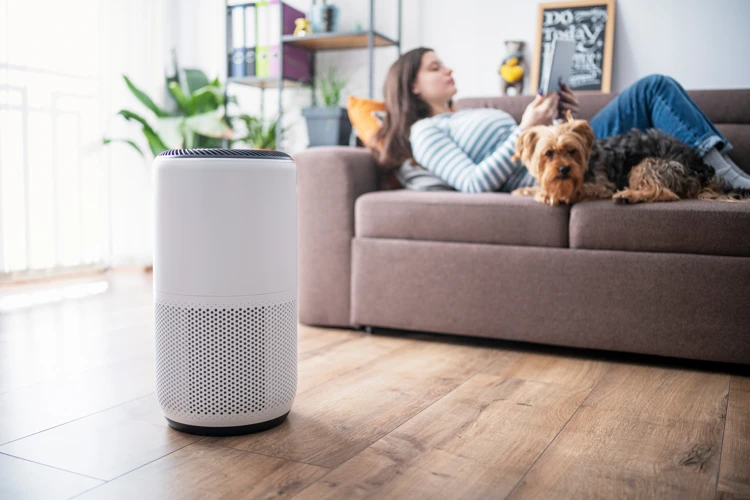
If you suffer from allergies or asthma, choosing the right air purifier is crucial in reducing symptoms and improving your quality of life. Two common methods of air purification are UV-C light and HEPA filters. Both approaches have their pros and cons, so it can be difficult to determine which one is better suited for your needs. In this section, we’ll take a closer look at both methods and discuss how they can benefit allergy and asthma sufferers.
Pros and cons of UV-C light
UV-C light is a common technology used for air purification, but like any other technology, it has its own set of advantages and disadvantages. Let’s have a look at some of the pros and cons of using UV-C light for allergies and asthma:
Pros:
- Effective against germs and bacteria: UV-C light has been shown to be effective against a broad range of microorganisms, including viruses and bacteria. This makes it an excellent technology for eliminating pathogens that can trigger allergies and asthma.
- No chemicals or byproducts: Unlike some air purification technologies, such as ozone generators, UV-C light does not produce any chemicals or byproducts that can also cause allergies and asthma.
- No filter replacement required: Since UV-C light does not rely on filters, there are no ongoing maintenance costs or filter replacement requirements. This makes it a cost-effective and eco-friendly option for air purification.
- Low energy consumption: UV-C lamps consume very little energy compared to other types of air purification equipment, making it a great option for those looking to save on energy bills.
Cons:
- Not effective on air pollutants: While UV-C light does eliminate pathogens, it does not remove other types of air pollutants such as dust, pet dander, and pollen.
- Not effective on larger particles: UV-C light is unable to trap larger particles like HEPA filters can. This means some allergens and asthma triggers like mold spores may still be present in the air.
- Safety concerns: UV-C light can be harmful if exposed to skin and eyes, so it should only be used in air purification systems that contain these lights in enclosed areas or properly shielded to prevent exposure to humans.
- Limited range: The range of UV-C light is limited, and it needs to have direct contact with the surface where microorganisms are present in order to kill them. This means it may not be effective for larger rooms or areas where the air flow is obstructed.
While UV-C light is not a perfect option for air purification, it does have its own set of strengths and weaknesses that should be considered before deciding to use it.
Pros and cons of HEPA filters
HEPA filters, or High Efficiency Particulate Air filters, are a type of air filter known for their ability to capture airborne particles as small as 0.3 microns with 99.97% efficiency. Here are some of the pros and cons of using HEPA filters:
Pros:
- Effective filtration: HEPA filters are incredibly efficient at capturing tiny particles such as pollen, dust mites, pet dander, and mold spores. They are especially effective for people with allergies or asthma.
- Improved air quality: By removing airborne allergens and irritants, HEPA filters can improve indoor air quality and provide relief for those with respiratory issues.
- Long lifespan: HEPA filters are known for their durability and can last for several years with proper maintenance.
- Eco-friendly: HEPA filters do not produce any harmful byproducts and are considered to be a more eco-friendly option compared to other air filtration methods.
- Versatile: HEPA filters can be used in a variety of settings including homes, offices, hospitals, and industrial settings.
Cons:
- Expensive: HEPA filters are generally more expensive than other types of filters, which can pose a challenge for those on a tight budget.
- Can strain HVAC systems: HEPA filters are dense and can restrict air flow, which can cause strain on heating and cooling systems.
- Require regular maintenance: In order to maintain their effectiveness, HEPA filters require regular maintenance, including periodic replacement.
- Not effective for odors or gases: While HEPA filters can capture solid particles, they are not effective for removing gases or odors.
- May not fit all HVAC systems: HEPA filters are available in different sizes, but some HVAC systems may not be compatible with them.
HEPA filters are an excellent option for those looking to improve indoor air quality and reduce allergens and irritants. However, they do come with some drawbacks that should be considered before investing in one.
Which is better for allergies
Both UV-C lights and HEPA filters are helpful in reducing allergens in indoor spaces, but which one is better for allergies? Let’s take a closer look.
HEPA filter:
- HEPA filters are highly effective at trapping allergens such as pollen, dust mites, pet dander, and mold spores, with an efficiency rate of up to 99.97%.
- HEPA filters remove allergens from the air and trap them in the filter, preventing them from circulating back into the room.
- HEPA filters are recommended by many allergists as a way to reduce exposure to allergens.
- However, HEPA filters do not address allergens that have settled on surfaces in the room and may not be able to capture very small particles such as viruses or bacteria.
- Some people may also be allergic to the materials used in HEPA filters, such as fiberglass.
UV-C light:
- UV-C lights destroy allergens such as mold, bacteria, and viruses by damaging their DNA or RNA, making them unable to reproduce.
- This type of light can complement the use of HEPA filters by targeting allergens that may have settled on surfaces in the room.
- UV-C lights can also reduce odors caused by allergens such as pet dander or cigarette smoke.
- However, UV-C lights do not physically remove allergens from the air, and particles that are not exposed to the light can still circulate in the room.
- UV-C lights can also be harmful to humans if they are exposed to the light directly for long periods of time.
Conclusion: Both HEPA filters and UV-C lights are effective in reducing allergens in indoor spaces, but in terms of capturing allergens from the air, HEPA filters may be the better option as they physically remove them from the air. However, for reducing allergens that are settled on surfaces, UV-C lights may be more effective. It’s important to consider your specific needs and situation to choose the best option for you.
Which is better for asthma
When comparing UV-C Light and HEPA filters for asthma sufferers, both options have their advantages and disadvantages. Here are a few key considerations to help you decide which option is best for you.
Bacterial and Viral Allergens:
UV-C light has been shown to effectively neutralize many types of bacteria and viruses. This is because UV-C light damages the genetic material of these pathogens, making it difficult for them to reproduce and cause illness. In comparison, HEPA filters are not specifically designed to kill bacteria and viruses, but rather to trap them in the filter.
Particle Size:
Asthma sufferers are often triggered by tiny airborne particles such as pollen, dust, and pet dander. HEPA filters are specifically designed to capture these particles, with a minimum particle size requirement of 0.03 microns. In comparison, UV-C light is not effective against these types of particles and may not provide the same level of relief for asthma sufferers.
Airflow:
Some asthma sufferers may find that a HEPA filter slows down the airflow in their home, making it more difficult to breathe. This is because the filters are designed to capture particles, which can create resistance in the air flow. In comparison, UV-C light does not create resistance in the airflow and may provide more comfortable breathing conditions for asthma sufferers.
To summarize, both UV-C Light and HEPA filters have their advantages and disadvantages for asthma sufferers. HEPA filters are specifically designed to capture tiny airborne particles that can trigger asthma, while UV-C light is better suited for bacterial and viral allergens. Additionally, HEPA filters can slow down air flow, which can be uncomfortable for some asthma sufferers. Consider your individual needs and consult with a healthcare professional to determine which option is best for you.
| UV-C Light | HEPA Filters | |
|---|---|---|
| Bacterial and Viral Allergens | Effective at neutralizing many types of bacteria and viruses | Not specifically designed to kill bacteria and viruses, but rather to trap them in the filter |
| Particle Size | Not effective against tiny airborne particles that can trigger asthma | Specifically designed to capture tiny airborne particles that can trigger asthma |
| Airflow | Does not slow down airflow in the home | May slow down airflow in the home, which can be uncomfortable for some asthma sufferers |
Other Factors to Consider
When it comes to choosing between UV-C light and HEPA filters for allergies and asthma relief, there are many factors to take into account. While we have already discussed the pros and cons of each option, there are other key considerations that may alter your decision. These include other types of filters, cost and maintenance, as well as brand and model. Let’s dive deeper into these factors to help you make an informed choice.
Other types of filters
When it comes to air filters, there are a variety of different options available beyond just HEPA and UV-C filters. Let’s explore some of the other types of filters that might be worth considering for allergies and asthma relief.
One option is a carbon filter. This type of filter is great for removing odors and chemicals from the air. It works by using activated carbon to absorb pollutants rather than trapping them like a HEPA filter does. It can be particularly effective for people who are sensitive to volatile organic compounds (VOCs), which are chemicals found in many household products.
Another option is an electrostatic filter. This type of filter uses an electrostatic charge to attract and trap pollutants in the air. It can be quite effective at removing small particles, but it may not be as effective as a HEPA filter at trapping larger allergens like pet dander and dust mites.
A third option is a photocatalytic filter. This type of filter utilizes a chemical reaction between light and a catalyst to break down pollutants in the air. It can be particularly effective for removing volatile organic compounds (VOCs) as well as mold and bacteria. However, it may not be as effective at removing larger particles like pet dander and pollen.
Table: Other Types of Filters
| Type of Filter | How it Works | Pros | Cons |
| — | — | — | — |
| Carbon | Uses activated carbon to absorb pollutants | Great for removing odors and chemicals | Not as effective at removing larger particles like pet dander |
| Electrostatic | Uses an electrostatic charge to attract and trap pollutants | Effective at removing small particles | May not be as effective as a HEPA filter at trapping larger allergens |
| Photocatalytic | Utilizes a chemical reaction between light and a catalyst to break down pollutants | Effective for removing VOCs, mold, and bacteria | May not be as effective at removing larger particles like pet dander |
It’s important to note that none of these filters are inherently better or worse than HEPA or UV-C filters. The best option for your home will depend on your specific needs and the pollutants you are trying to remove. Additionally, it’s worth considering combining multiple filters to maximize air quality.
Cost and maintenance
When it comes to cost and maintenance, both UV-C lights and HEPA filters have their own advantages and disadvantages. Here is a breakdown of what you can expect:
Cost:
- UV-C lights tend to have a higher upfront cost compared to HEPA filters.
- However, UV-C lights do not need to be replaced as often as HEPA filters, which can save money in the long run.
- HEPA filters need to be replaced every 6-12 months, depending on usage and the manufacturer’s recommendation.
Maintenance:
- UV-C lights require little to no maintenance once installed.
- HEPA filters require regular maintenance, which can add to the overall cost.
- HEPA filters need to be vacuumed or wiped down regularly to remove any trapped particles.
- Depending on the model, HEPA filters may also need to be washed or replaced more frequently.
- UV-C lights require periodic cleaning to remove any dirt or buildup that can block the light and reduce its effectiveness.
Ultimately, the cost and maintenance required for UV-C lights and HEPA filters will depend on your specific needs and usage. It is recommended to do research on the brand and model you are considering to determine the total cost of ownership over time.
Brand and model
When it comes to choosing between UV-C light and HEPA filters, the brand and model you choose can make a big difference. Some brands use higher quality materials and technology, which can lead to better performance and longevity.
Consider the following when choosing a brand and model:
- Customer reviews: Look for brands with positive reviews from customers who have used their air purifiers for allergies and asthma. This can give you an idea of how well the products work in real-world settings.
- Warranty: Check the warranty on the product before purchasing. Some brands offer longer warranties that can give you peace of mind and protect your investment.
- Replacement filters: Find out how easy it is to replace the filters and how often they need to be replaced. Some brands have more expensive or harder to find replacement filters, which can add to the overall cost of owning the air purifier.
- Additional features: Look for brands that offer additional features, such as multiple fan speeds, air quality sensors, and automatic shut-off. These features can make the air purifier more convenient and effective.
Ultimately, the brand and model you choose will come down to your personal preferences, budget, and needs. Take the time to research different options and read reviews from real customers to find the air purifier that will work best for you.
Conclusion
After weighing the pros and cons of UV-C lights and HEPA filters, it is clear that both have their advantages and disadvantages for those with allergies and asthma. While UV-C lights can effectively kill germs and bacteria, they are not as effective at removing allergens as HEPA filters. On the other hand, HEPA filters can capture up to 99.97% of particles in the air, including allergens and pollutants, but they do not kill germs and bacteria.
Ultimately, the decision on which is better for allergies and asthma depends on individual needs and preferences. If you are someone who is particularly concerned with germs and bacteria, UV-C lights may be the better option for you. However, if you suffer from allergies and asthma, a HEPA filter would likely provide more relief.
It is also important to consider other factors, such as the cost and maintenance of each option. While HEPA filters tend to come with a higher price tag, they do not require much maintenance and can last for years. UV-C lights, on the other hand, may require more frequent replacement and maintenance.
The brand and model of the UV-C light or HEPA filter is also important to consider. It is recommended to do thorough research and read reviews before making a purchase to ensure that you are getting a high-quality product that meets your needs.
In conclusion, both UV-C lights and HEPA filters have their advantages and disadvantages for those with allergies and asthma. However, by carefully considering individual needs and preferences, as well as other factors such as cost and maintenance, it is possible to make an informed decision that will ultimately provide relief and improve indoor air quality.
Frequently Asked Questions
What are the common symptoms of allergies and asthma?
The common symptoms of allergies include nasal congestion, runny nose, sneezing, itchy or watery eyes, and skin rashes. Asthma symptoms include coughing, wheezing, shortness of breath, and chest tightness.
What is UV-C light and how does it work?
UV-C light is a type of ultraviolet light that has germicidal properties. It works by damaging the DNA of microorganisms like bacteria, viruses, and mold, which prevents them from reproducing and effectively killing them.
What is a HEPA filter and how does it work?
A HEPA (High Efficiency Particulate Air) filter is a type of air filter that can remove up to 99.97% of particles that are 0.3 microns or larger from the air. It works by trapping particles in a dense fiber mesh, effectively removing them from the air that passes through the filter.
Can UV-C light and HEPA filters be used in combination?
Yes, using UV-C light and HEPA filters in combination can be very effective at removing allergens and irritants from the air. The UV-C light can kill microorganisms like bacteria and viruses that may have bypassed the filter, while the HEPA filter can capture larger particles like pollen and dust.
Do UV-C lights produce ozone?
Some UV-C lights can produce ozone as a byproduct, which can be a respiratory irritant and worsen asthma symptoms. It’s important to look for UV-C lights that are ozone-free to avoid these potential health risks.
Are HEPA filters washable or reusable?
Most HEPA filters are not washable or reusable and need to be replaced every 6-12 months, depending on use. Some models may have washable pre-filters that can extend the life of the HEPA filter, but the HEPA filter itself should be replaced regularly for optimal performance.
Can UV-C lights be harmful to humans?
UV-C lights can be harmful to human skin and eyes if exposed directly and for extended periods of time. However, when used in air purifiers, UV-C lights are enclosed in the unit and pose no risk to humans when used properly.
What are some other types of air filters available?
Other types of air filters include activated carbon filters, which can remove odors and gases from the air, and electrostatic filters, which use an electrical charge to attract and trap airborne particles.
How much do UV-C light and HEPA filter air purifiers cost?
The cost of UV-C light and HEPA filter air purifiers can vary depending on the brand and model. On average, a good quality air purifier can range from $100 to $500 or more.
What should I look for when choosing an air purifier?
When choosing an air purifier, consider the room size, the type of filtration technology used, the filter replacement schedule and cost, and any additional features like automatic shut-off or remote control.

